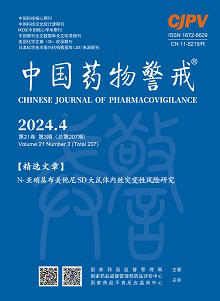|
|
Study on Standards and Norms of Drug Safety Monitoring Data and Comprehensive Analysis
HUANG Chuan-hai, TIAN Yue-jie, LI Pan-hai, LIU Wei, JIN Shao-hong
2010, 7(1):
25-27.
Drug safety monitoring is the basic content of pharmacovigilance.Comprehensive analysis on monitor-ing data which is the most complex and most difficult step, is a key step in pharmacovigilance. No unified standards in the world update. With the analyzed characteristics of drug safety monitoring data through systematic research in China, drawing on international experience, combining with our national conditions, development of drug safety monitoring data, a comprehensive analysis of standards and norms, the standardization of evaluation and analysis were improved effectively, and the result of bias due to human factors is reduced, and contribute to enhancing drug safety analysis of information utilization levels, to improve drug safety monitoring system, and also to reduce the incidence of drug safety and impact.
References |
Related Articles |
Metrics
|
